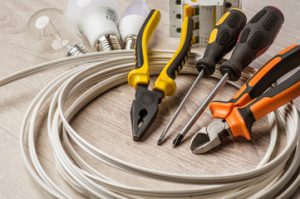Antichità Roma hold an allure that goes beyond their physical form. They carry echoes of forgotten eras, preserved in metal, stone, clay, or fabric. Each piece tells a fragment of human history, shaped by the hands and minds of those who came before. Their presence invites curiosity about the world as it once was.

In recent years, the study of antiquities has moved beyond simple preservation. Advanced imaging techniques now reveal hidden inscriptions and details invisible to the naked eye. This technology allows researchers to uncover layers of meaning without damaging the artifact. Such discoveries are rewriting historical narratives in unexpected ways.
The trade and collection of antiquities are shifting toward more ethical practices. There is a growing awareness about the cultural significance of these objects. Legal frameworks now focus on returning looted artifacts to their rightful origins. This ensures that their stories remain connected to the communities that shaped them.
Antiquities are also becoming central to digital preservation efforts. High-resolution 3D scanning creates accurate replicas for study and display. These digital versions can be shared globally, giving more people access to cultural heritage. They also act as backups in case the original is lost or damaged.
The interpretation of antiquities is evolving with multidisciplinary research. Archaeologists collaborate with historians, chemists, and linguists to unlock the full context of each piece. Material analysis can reveal the source of raw materials and the trade routes they traveled. This paints a fuller picture of ancient economies and cultural exchange.
Conservation methods for antiquities now prioritize stability over restoration. The goal is to halt decay while preserving authenticity. Environmental controls such as humidity regulation and light management protect fragile materials. These measures allow artifacts to endure without losing the marks of time that give them character.
The role of antiquities in education has expanded with immersive learning experiences. Virtual reality simulations place viewers in the settings where artifacts were originally used. This approach makes history tangible and relatable for younger audiences. It also fosters appreciation for the craftsmanship and ingenuity of earlier civilizations.
Antiquities often spark debates about ownership and universal heritage. Some argue they belong in shared spaces accessible to all. Others believe they should remain in their place of origin to maintain cultural continuity. These discussions reflect the tension between global access and local identity.
New archaeological discoveries continue to feed the pool of antiquities available for study. In some cases, entire collections emerge from single excavation sites. Each find brings with it challenges of documentation, preservation, and interpretation. The excitement of discovery must be balanced with responsibility.
Artisans and designers often draw inspiration from antiquities to create modern works. Patterns, motifs, and techniques once used in ancient craft are revived in contemporary contexts. This blending of old and new keeps traditional artistry alive. It also demonstrates the enduring appeal of ancient aesthetics.
The economic value of antiquities remains a complex topic. Rare and well-documented pieces can command high prices in private sales. However, this market is tightly regulated to prevent illicit trafficking. Transparency in provenance is now a key factor in determining both legality and worth.
Cultural festivals and exhibitions increasingly use antiquities as focal points. They serve as tangible links between past and present in public celebrations. Interactive displays allow visitors to connect with history through touch-safe replicas. These experiences encourage cultural pride and curiosity.
Advances in residue analysis have allowed scientists to detect traces of ancient food, dyes, and perfumes on antiquities. Such findings provide intimate glimpses into daily life thousands of years ago. They help reconstruct ancient diets, clothing colors, and scents. This adds a sensory dimension to historical research.
Antiquities also reveal patterns of technological innovation in ancient societies. Tools, machinery parts, and decorative objects reflect evolving skills and problem-solving approaches. Studying these pieces shows how necessity and creativity shaped development. These lessons remain relevant to innovation today.
Many antiquities are tied to rituals, beliefs, and symbolic practices. Decoding these elements often requires careful comparison with other finds and written records. Such research can shed light on ancient worldviews and social structures. The symbolic meaning sometimes proves more significant than the physical object itself.
Climate change is emerging as a threat to antiquities both in situ and in storage. Rising temperatures, floods, and erosion can irreversibly damage fragile sites and artifacts. This urgency is driving new strategies for rapid documentation and relocation when necessary. The aim is to safeguard heritage before it disappears.
The rise of citizen archaeology has brought more people into direct contact with antiquities. Enthusiasts contribute to surveys, digs, and cataloging efforts under expert guidance. This community involvement spreads awareness and appreciation. It also increases the resources available for preservation.
Some antiquities are so fragile that they cannot be moved without risk. In such cases, site-specific museums and protective shelters are built around them. This allows the public to view the artifact in its original context. It preserves both the object and the environment that shaped it.
Storytelling remains one of the most powerful ways to connect people to antiquities. Narratives woven around objects breathe life into their silent forms. These stories bridge the gap between the past and modern audiences. They remind us that history is not just about dates but about lived experiences.
Modern craftsmanship is beginning to incorporate techniques learned from studying antiquities. Ancient metalworking, pottery glazing, and weaving patterns are finding their way into present-day products. This revival not only honors historical skill but also offers sustainable methods forgotten over centuries. The continuity between ancient and modern art enriches both worlds.
Tourism connected to antiquities is shifting toward more responsible models. Guided tours now emphasize preservation etiquette and cultural respect. Visitors are encouraged to engage with artifacts without contributing to their deterioration. This sustainable approach ensures that historical treasures remain for future generations to witness.
Digital storytelling platforms are allowing antiquities to reach global audiences instantly. High-quality photographs and interactive models bring rare artifacts into homes and classrooms. This accessibility removes geographic barriers to cultural education. It also sparks interest in protecting heritage sites worldwide.
Certain antiquities hold immense symbolic power for specific communities. They may represent ancestral achievements, spiritual beliefs, or moments of resistance. When such objects are restored to their origin, they often reignite cultural pride and connection. Their return becomes a living act of historical healing.
Research on antiquities is also uncovering connections between distant civilizations. Shared design elements or materials suggest early forms of global interaction. These links challenge assumptions about isolation in ancient times. They remind us that human societies have always been more interconnected than we might think.
Antiquities continue to offer clues to questions humanity still asks. They show how people adapted, thrived, and expressed themselves in times long gone. As preservation, technology, and ethics evolve, so too does our relationship with these relics. Their value lies not only in their age but in their ability to keep history alive for generations to come.








